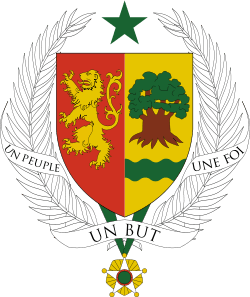Senegambia (Dutch West India Company)
| Senegambia | ||||||||
| Bovenkust | ||||||||
| Dutch colony | ||||||||
| ||||||||
| ||||||||
 | ||||||||
| Capital | Gorée | |||||||
| Languages | Dutch | |||||||
| Religion | Dutch Reformed | |||||||
| Political structure | Colony | |||||||
| History | ||||||||
| • | Established | 1617 | ||||||
| • | Disestablished | 1678 | ||||||
| ||||||||
Part of a series on the |
|---|
| History of Senegal |
 |
|
|
Senegambia, also known in Dutch as Bovenkust ("Upper Coast"), was the collective noun for the fortifications and trading posts owned by the Dutch West India Company (DWIC) in the region now known as Senegal. The main purpose of these trading posts was to obtain slaves in order to ship them to the Americas. The government of the territory was based on Gorée. In 1677, the Dutch lost this island to France. The next year, the French also conquered all DWIC trading posts on the Senegalese coast as well as the island of Arguin.
Having lost almost all the trade in gum arabic, bezoar stone, ambergris and ostrich feathers, the DWIC wanted to regain its position. The Frenchman Jean du Casse, head of the Compagnie de Sénégal, reached an agreement with the local leaders, who decided to destroy the Dutch trading posts and the DWIC lost its position for good.
Senegambia possessions of the DWIC
- Gorée: 1617 - 1663, 1664 - 1677.
With the fortifications: Nassau and Orange.
Trading posts:
- Portudal: 1633 - 1678. Here the DWIC bought slaves and ivory.
- Rufisque: 1633 - 1678.
- Joal: 1633 - 1678.

